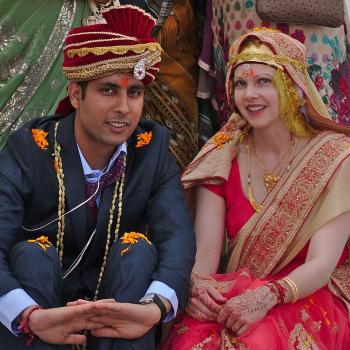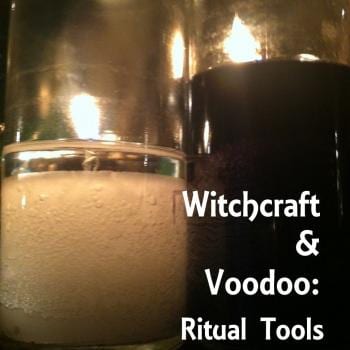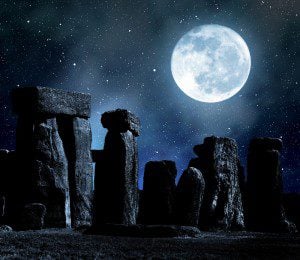
Is it a bad thing that when I realize that I disagree with the popular opinion, I get a little bit excited? That once I’ve had a chance to reconsider my opinion and determine that I continue to disagree, and I’ve thought about the reasons, my eager little heretic heart cackles, “It’s on!”?
It seems that I find myself in disagreement with two writers I respect: Jason Mankey, and, to a degree, John Halstead. Their stance certainly appears to be the common consensus; but I believe that Pagan temples are not only a damn fine idea, but that they are important and necessary. There are a plethora of reasons for this. Molly Khan raised a couple of good points in her recent article. I have a few to add.
Because They Are Important
I’m sure you can’t help but have noticed how difficult it is to get anyone else to take us seriously. Generally the best we can hope for is to be mocked in the media; at least then someone is paying attention!
Is it because we have small numbers? You might think so, but that doesn’t really add up. Wikipedia lists the number of Pagans in the United States at a conservative estimate of 150,000 to 200,000; with possibly as many as a cool million of us. Wikipedia can’t be bothered to keep track of how many there are of us in Canada, but generally it’s about a tenth of that based on comparative population, so that would be anywhere from 20,000 to 100,000. Okay, so we’re not a big group; fair enough.
- Except that the Unitarian Universalists have only 162,796 certified members and 54,671 church school enrollees (as of 2011).
- Except that the New Apostolic Church have only 37,514 US members (as of 2005). There’s only 13,315 of them in Canada (as of 2007).
- Except that there are only 86,837 Quakers in the US and a measly 1,216 in Canada.
So, what gives? Is it that we’re not Christian? Nope!:
- Bahá’ís number 169,130 in the US (2011) and 46,600 in Canada (2005).
- Even Hindus only have about 1.5 million, or .5 percent of the US population.

Obviously they must have something we don’t. What could that be? Is it money? Nope; I have seen UU and New Apostolic Churches; never very big, are they?
But you know, whenever some big media group wants to get the Pagan perspective, you notice it’s Selena Fox they talk to, right? So why do you think that is?
It all has to do with Sovereignty. I’m not sure why this is such a hard concept for us Pagans to grasp, since so many of our major deities are concerned with this, but there seems to be some intrinsic programming in the Western culture that tells us that until you own a piece of land, you aren’t a real group, and don’t have to be dealt with on a serious basis.
Even claiming a certain piece of public land can be helpful! Modern Druids, for example, have been worshiping at Stonehenge since the turn of the 20th century.
So in part, the reason why we need Pagan temples is political. If nothing else, they’ll create some visibility for us. People will travel by our holy forest shrines and our sacred heathen halls, and realize that we’re a part of their community.
Because They Might Be Necessary
This passage from John’s article struck me as being particularly significant, and I’ll tell you why:
So why aren’t people flocking to Paganism? I suspect that part of the reason we Pagans have not yet capitalized on the growth of the Nones is that people can’t find us. Sure, we’re easy to find on the Internet. And you can still find Pagan books in the (rapidly shrinking) metaphysical section of (rapidly disappearing) bookstores.
Okay, so you have noticed that the Pagan bookstores are disappearing? The truth is that the internet is killing them. Metaphysical store owners often have to make the choice between staying open and eating, and the ones that survive usually do so only because the owner’s spouse can afford to support them. This is so common, in fact, that Witchvox says specifically on their website that you should call Pagan stores first before visiting, because they might be gone when you get there. And these have been the places where we’ve come together since Aleister Crowley and Gerald Gardner met in a London bookshop, and more often than not, these are the places that new Pagans first encounter Paganism. So where are we going to gather, and how are we going to connect with new Pagans, when they’re gone?
Also, Molly’s article points out that permanent spaces fill particular needs that families have. Perhaps we were once a religion made up entirely of younger, childless adults, but this is no longer the case. We have several second and third generation Pagans now, and our elders are starting to actually become elders. Small children and elders with health problems cannot trek seventeen miles into a thicket and dance. We should bring the thicket to them.
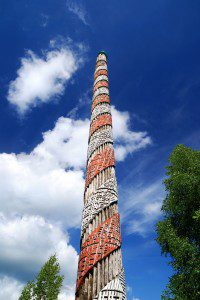
A Damn Fine Idea
Okay, let’s get some stuff out of the way. Yes, I agree with you: we don’t really need dedicated sacred ground, because for most of us, any place we designate is holy ground. Yes, my temple is the forest, or a desert mesa, or a mountain-top with a view of the night sky, or pretty much anywhere I don’t find a lot of human beings and their urbanisms. Except that I can also make sacred ground in a city park or a public beach or even a provincial legislature if I like.
That being said, I would like to have a dedicated place to go where I could do holy ceremony and worship at any hour of the day or night. I would like to have a consecrated temple space that I don’t have to cast a circle in every time I want to do a rite. I would like to have a place filled with devotional statuary, or a place perfectly designed to note the Solstices at its far corners in perfect juxtaposition with its latitude and longitude. I think others out there want these things too.
I want a Stonehenge made out of rock crystal! I want a holy labyrinth made out of roses and grapevines! I want the Darnassus temple from World of Warcraft! I want the freaking Parthenon! Hell, I’d be happy with an Estonian hall in the Heathen hof style! I want a place that is dedicated to my gods, where I don’t have to deal with pushy Christians and doubting Atheists, where I can go, make offering, conduct ritual, and honour the Powers in peace and security. And I’m sure I’m not alone!
Do I think this would give that temple any more legitimacy that any other patch of park or bit of beach might have as a holy place? Theologically speaking, no. But it would be a place that would be ours, filled with our culture and our imagery and our ideas of the sacred; a place dedicated to our deities, where They could manifest and where They would know They were always welcome. I am sure our deities would appreciate that!
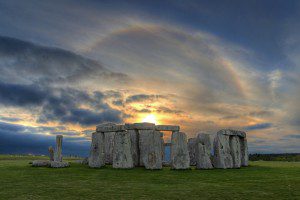
So why don’t we have these things? I don’t think that the problem is that we don’t think temples are a good idea; or that we believe that the creation of any sort of Pagan temple in any way influences or threatens our own Paganisms. I think the problem is that none of us can bear the thought that someone else might be running it, and that we might not like the way they run it, and that they might be formed in some location that we don’t personally have access to. I think that the real problem is that we can’t bear the idea that somebody might have something we want, and that they might tell us what we can and cannot do with it. Or that somebody else might have something that we don’t. And I think that’s a juvenile attitude to take.
But surely we can grow beyond that! Pagan temples, as proven by the ancient ruins we still have, are significant to more than just the small groups who are running them. I can definitely see the value of places of pilgrimage. Maybe this is an idea closer to the shrines that John Halstead was talking about. Maybe we need to make places holy places that exist for no better reason than to give honour to the deities we follow.
Not only would such places be good for our deities, they would give us a sense of “cultural identity” here in North America. In the UK, goddess tours and witchcraft tours are a big thing. North American Pagans do those tours all the time, so obviously it’s not that we don’t believe there’s any such thing as “holy ground”! I know Pagans who travel to Salem or to Sedona, and even to Chechen Itsa, in an effort to discover some of that in North America. But we don’t really have many such places here, so maybe we need to create them.
Creating Pagan temples is certainly a path faced with many challenges. So call them “shrines” if you want . . . but let’s make them. Let’s make some holy grounds that belong to us alone.
Hey there! Jason Mankey bet us all we couldn’t get as many Facebook likes as he could, so help me prove him wrong and like the Between the Shadows page! And don’t forget to check out the Patheos Pagan channel for more great articles.







